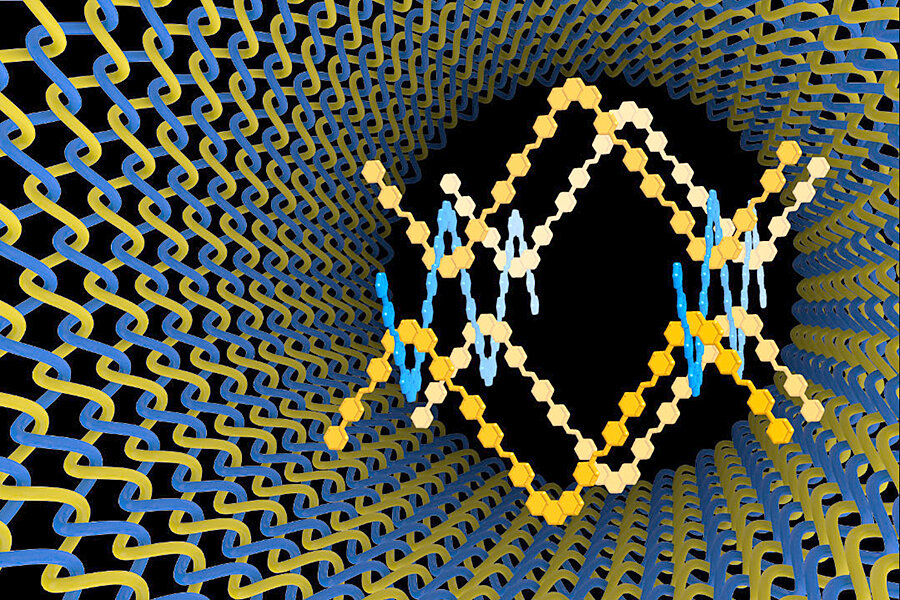In historic first, scientists weave nanomaterials into 3-D nanofabric
Loading...
A team of scientists has come up with a way to weave together even the tiniest of particles.
Nanomaterials aren’t usually made by weaving, but researchers from the US Department of Energy’s Lawrence Berkeley National Laboratory and the University of California, Berkeley have figured out a method that knits a three-dimensional, organic framework from synthesized threads.
“Weaving in chemistry has been long sought after and is unknown in biology,” said Omar Yaghi, a chemist affiliated both with the Berkeley Lab and UC Berkeley’s chemistry department, in a news release. “However, we have found a way of weaving organic threads that enables us to design and make complex two- and three-dimensional organic extended structures.”
According to Dr. Yaghi, the resulting nanofabric could have big implications for carbon sequestration.
Yaghi and his research team created the nanofabric by synthesizing a reaction between a copper compound and two other elements. In the resulting nanofabric, the copper compound provided the necessary structure for the woven material to take on a three-dimensional shape.
Called a covalent organic framework, or COF, the resulting woven nanomaterial carries extremely high elasticity, adaptability, and mechanical potential. The copper compounds can be removed and added as needed without any overall change in the COF’s structure.
The researchers explain that for COFs, “Learning how to link molecular building units by strong bonds…. into weaving forms would be a boon to making materials with exceptional mechanical properties and dynamics.”
Yaghi explained, “We have taken the art of weaving into the atomic and molecular level, giving us a powerful new way of manipulating matter with incredible precision in order to achieve unique and valuable mechanical properties.”
Yaghi and his research team believe that there will be many applications for these woven particles, including for developing fuels and plastics. Yaghi’s previous research has explored the applications of both COFs and MOFs, or metal-organic frameworks. Similar to COFs, MOFs combine both inorganic and organic units in order to create highly flexible and variable structures.








